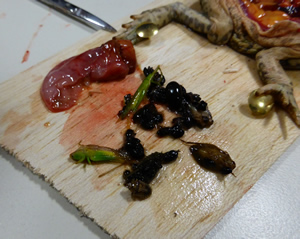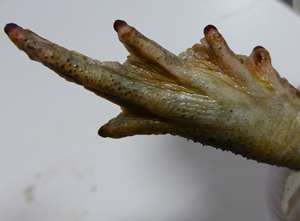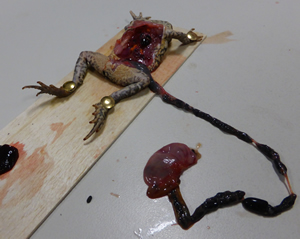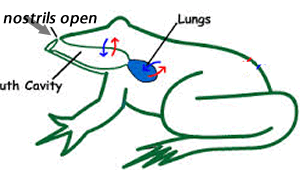
Follow the video on the right, showing a cane toad dissection.
What is the main food source of the toad?
When compared to the stomach of the rat, the toad has a very large stomach. It is capable of taking in a huge mass of food.
How does this impact on the local, native frogs?

The feet of the toad are webbed.
Explain why?
Is this a physiological, structural or behavioral adaptation? Explain.


How does its heart differ from the rats?

A frog and toad breathe much like a mammal, by taking air in through their nostrils and down into their lungs. The mechanism of drawing air into the lungs, however, is slightly different than in humans. Frogs, unlike humans, do not have ribs nor a diaphragm, which in humans expands the chest and thereby allowing outside air to flow in to the lungs.
In order to draw air into its mouth the frog or toad uses the floor of their mouths. They increase the volume of the mouth by expanding their throat. Then the nostrils open allowing air to enter the enlarged mouth. The nostrils then close and the air in the mouth is forced into the lungs by contraction of the floor of the mouth. To eliminate the carbon dioxide in the lungs the floor of the mouth moves down, drawing the air out of the lungs and into the mouth. Finally the nostrils are opened and the floor of the mouth moved up pushing the air out of the nostrils.
Amphibians also breathe through their skin and mouth lining as well as their lungs.
